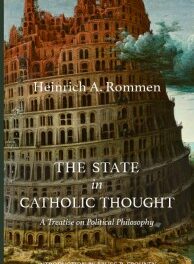We support our Publishers and Content Creators. You can view this story on their website by CLICKING HERE.
The Forty Martyrs of England and Wales were canonized by Pope Paul VI in 1970. Although they laid down their lives for the Faith over a period of almost 150 years, the first being executed under Henry VIII in 1535 and the last under Charles II in 1679, very few of them are household names, even in England.
Perhaps the only one who is widely known is Edmund Campion. In this sense, each of these martyrs deserves a place among the unsung heroes of Christendom. We will focus, however, on the three women in their number, one of whom might be almost as well-known as Edmund Campion, whereas the other two will probably be unknown even to devout Catholics.
Let’s begin with Margaret Clitherow, the best known of the three. Born in the ancient city of York sometime between 1553 and 1556, she became the wife of a wealthy butcher and the mother of three children. As early as 1576, she was imprisoned for her refusal to attend the services of the state-imposed Anglican religion. The records indicate that she was pregnant at the time.
For the next ten years, she would provide a safe refuge for priests in her home in the knowledge that harboring a priest was punishable by death. Years later, awaiting her execution, she would show that resolution that was the hallmark of the English Martyrs. “I confess death is fearful and flesh is frail,” she said, “yet I mind by God’s assistance to spend my blood in this faith as willingly as ever I put my paps into my children’s mouths.”
The slow and tortuously cruel death by hanging, drawing, and quartering—the fate of most of England’s martyrs—was not felt appropriate as a punishment for women. Instead, Margaret Clitherow was sentenced to death by “pressing.” The exact details of this “milder” form of execution were given by the judge in his sentencing of her:
You must return from whence you came, and there, in the lowest part of the prison, be stripped naked, laid down, your back upon the ground, and as much weight laid upon you as you are able to bear, and to continue three days without meat or drink, except a little barley bread and puddle water, and the third day to be pressed to death, your hands and feet tied to posts, and a sharp stone under your back.
Margaret Clitherow prepared for death as though she were preparing for a feast and a marriage. She fasted, prayed, and dressed in white linen. She sent her hat to her husband “in sign of her loving duty to him” and her hose and shoes to her daughter, Anne, “signifying that she should serve God and follow her steps of virtue.”
The sentence was duly carried out on March 25, which, appropriately enough, was both the date of the Feast of the Annunciation and the date, according to tradition, of Christ’s Crucifixion. It has been conjectured that Margaret, the mother of three, could possibly have been pregnant at the time of her martyrdom, which would have meant the death of her unborn child, forging a mystical connection with the Annunciation.
What is not open to conjecture is that she was laid on the ground and that her hands were bound to two stakes on the floor, forcing her to lay with arms outstretched in the form of a cross. A stone the size of a man’s fist was placed under her back and a door upon her body. Ordered to ask for the queen’s forgiveness for assisting priests, Margaret replied that “I have prayed for her.” Four hired beggars then began to place the weights upon her.
As she was being crushed to death she was heard to pray: “Jesu! Jesu! Jesu! Have mercy on me!” It is said that she took about fifteen minutes to die, a pool of blood spreading across the floor. Of her three children, aged fourteen, twelve, and ten at the time of their mother’s death, all would not only remain true to the Faith for which their mother had died but would pursue religious vocations. Her two sons became priests and her daughter became a nun.
Devotion to the martyred Margaret Clitherow spread rapidly. A manuscript written by Fr. John Mush, her confessor whom she had sheltered many times in her home, titled A True Report of the Life and Martyrdom of Mrs. Margaret Clitherow, was circulating in York within weeks of her death, and a widely read and influential account of her life and death appeared in Richard Verstegan’s Theatrum Crudelitatum Haereticorum, published in 1587. Margaret Clitherow is now honored as the Pearl of York in recognition of the great price she was prepared to pay for the heavenly reward.
A lesser-known pearl is St. Margaret Ward, honored as the Pearl of Tyburn, who was executed in London in 1588. Whereas Margaret Clitherow had been executed two years earlier for harboring priests, Margaret Ward was sentenced to death for helping a priest escape from prison. She had befriended the wife of the jailer at London’s Bridewell Prison and was allowed to bring the priest food. She smuggled a rope into the cell with which the priest let himself down to two men waiting in a boat on the Thames. Although the priest, William Watson, broke his leg during the escape, he was rowed to safety.
Margaret Ward was arrested, charged, and later tried for “aiding a traitor to escape.” Prior to her trial, she was tortured for eight days by being hung by her wrists and beaten. According to St. Robert Southwell, another of the English Martyrs, who would be executed seven years later, she
was flogged and hung up by the wrists, the tips of her toes only touching the ground, for so long a time that she was crippled and paralyzed, but these sufferings greatly strengthened the glorious martyr for her last struggle.
Prior to her execution, Ward was tempted with the offer of release if she asked for the queen’s pardon and agreed to conform to the state religion. She refused and was hanged for her faith at Tyburn on August 30, 1588.
The third of the trio of female English Martyrs is Anne Line. A convert to the Faith who was probably an acquaintance of William Shakespeare, she was martyred on February 26, 1601, in the last years of the reign of Queen Elizabeth. She had been arrested when priest-hunters raided her apartments during the celebration of Mass. The Jesuit priest who had been celebrating the Mass managed to remove his vestments in the nick of time and escape by mingling into the congregation.
Mrs. Line, however, was arrested for hiding priests and went to the gallows to suffer the martyrdom for which she had prayed. Devout and defiant to the last, she remarked of her conviction for harboring priests that “would God that where I harboured one, I had harboured a thousand.”
Echoing Anne Line’s words, we might pray that where we find one person with the courage of the saints, we might find a thousand. Certainly, with friends like Margaret Clitherow, Margaret Ward, and Anne Line praying for us, we need fear no enemies.
Republished with gracious permission from Crisis Magazine (October 2024).
This essay is part of a series, Unsung Heroes of Christendom.
The Imaginative Conservative applies the principle of appreciation to the discussion of culture and politics—we approach dialogue with magnanimity rather than with mere civility. Will you help us remain a refreshing oasis in the increasingly contentious arena of modern discourse? Please consider donating now.
The featured image is “Holy woman” (1897), by Stanisław Jarocki, and is in the public domain, courtesy of Wikimedia Commons.

 Conservative
Conservative  Search
Search Trending
Trending Current News
Current News 






